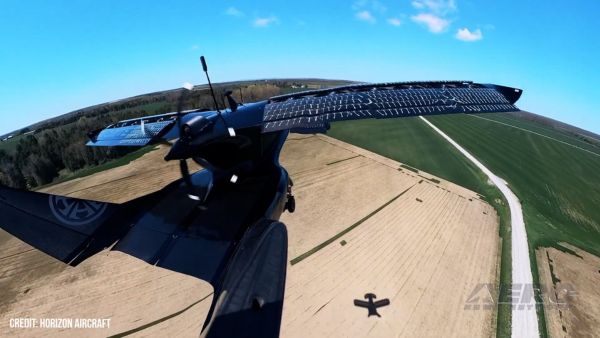Wed, Sep 19, 2012
Seeks New Technologies That Will Enable Future Missions
NASA is seeking proposals for its Small Business Innovation Research (SBIR) and Small Business Technology Transfer (STTR) programs that will create the new technologies needed to enable the agency's future missions.

The SBIR and STTR Programs are designed to provide small businesses and nonprofit research institutions with opportunities to compete for federal research and development awards and to stimulate the commercialization of the resulting technology. The programs address specific technology gaps in NASA missions, while striving to complement other agency research investments. Program results have benefited many NASA efforts, ranging from modern air traffic control systems, Earth-observing spacecraft and the International Space Station to Curiosity now roving the Red Planet.
"Space technology is the linchpin that joins together NASA's science, aeronautic and exploration goals, providing the essential new knowledge and capabilities that enables our present and future missions," said Michael Gazarik, director of NASA's Space Technology Program. "The annual solicitation for the SBIR and STTR programs embodies our desire to generate innovative ideas to address NASA's future mission needs by offering a broad collection of research and development needs and opportunities."
This year's call includes a new component to NASA's SBIR Program. NASA has added seven select topics in SBIR, representing unique space technology development challenges the agency believes are well suited to the innovation and problem-solving abilities of America's small businesses. By complementing its own efforts with these seven areas, NASA is hoping to improve on an already great program that benefits the agency and America's new technology economy.
The highly competitive SBIR and STTR programs are based on a three-phase award system. Phase 1 is a feasibility study to evaluate the scientific and technical merit of an idea. Firms successfully completing Phase 1 are eligible to submit Phase 2 proposals, expanding on the results of Phase 1. Phase 3 includes commercialization of the results of Phase 2, and requires the use of private sector or non-SBIR federal funding as innovations move from the laboratory to the marketplace.
The deadline for the two program solicitations is Nov. 29. Selections are expected to be announced in late February 2013. NASA's Ames Research Center in Moffett Field, CA, manages the SBIR and STTR programs for the agency's Space Technology Program. NASA's 10 field centers manage individual projects.
More News
“Each Honor Flight mission is a special occasion, but the ability to be a part of EAA AirVenture always creates unforgettable moments. Honoring our local Vietnam veterans out>[...]
From 2015 (YouTube Edition): The Airframes Displayed At AUVSI 2015 Were Quite Innovative It’s common to visualize a small vertical lift UAV as having 4 to 6 propellers, it&rs>[...]
The Airplane Began A Descent While Still In A Right Turn And Impacted Terrain On March 13, 2025, about 0733 central daylight time, a Cessna 525A airplane, N525CZ, was destroyed whe>[...]
It Looks Like It's Gonna Get A Bit Tight, Klyde FMI: www.klydemorris.com>[...]
Also: Blackhawk’s Replacement, Supersonic Flight, Archer 1Q/25, Long-Range VTOL Program U.S. Secretary of Transportation Sean P. Duffy released an update on progress being ma>[...]
 Aero-News: Quote of the Day (05.25.25)
Aero-News: Quote of the Day (05.25.25) Classic Aero-TV: Efficient Versatility -- NASA GL-10 Greased Lightning
Classic Aero-TV: Efficient Versatility -- NASA GL-10 Greased Lightning NTSB Prelim: Cessna 525
NTSB Prelim: Cessna 525 Klyde Morris (05.23.25)
Klyde Morris (05.23.25) Airborne-NextGen 05.20.25: Drone Regs, Zero-Emission Cargo, Door-Dash Drone
Airborne-NextGen 05.20.25: Drone Regs, Zero-Emission Cargo, Door-Dash Drone



